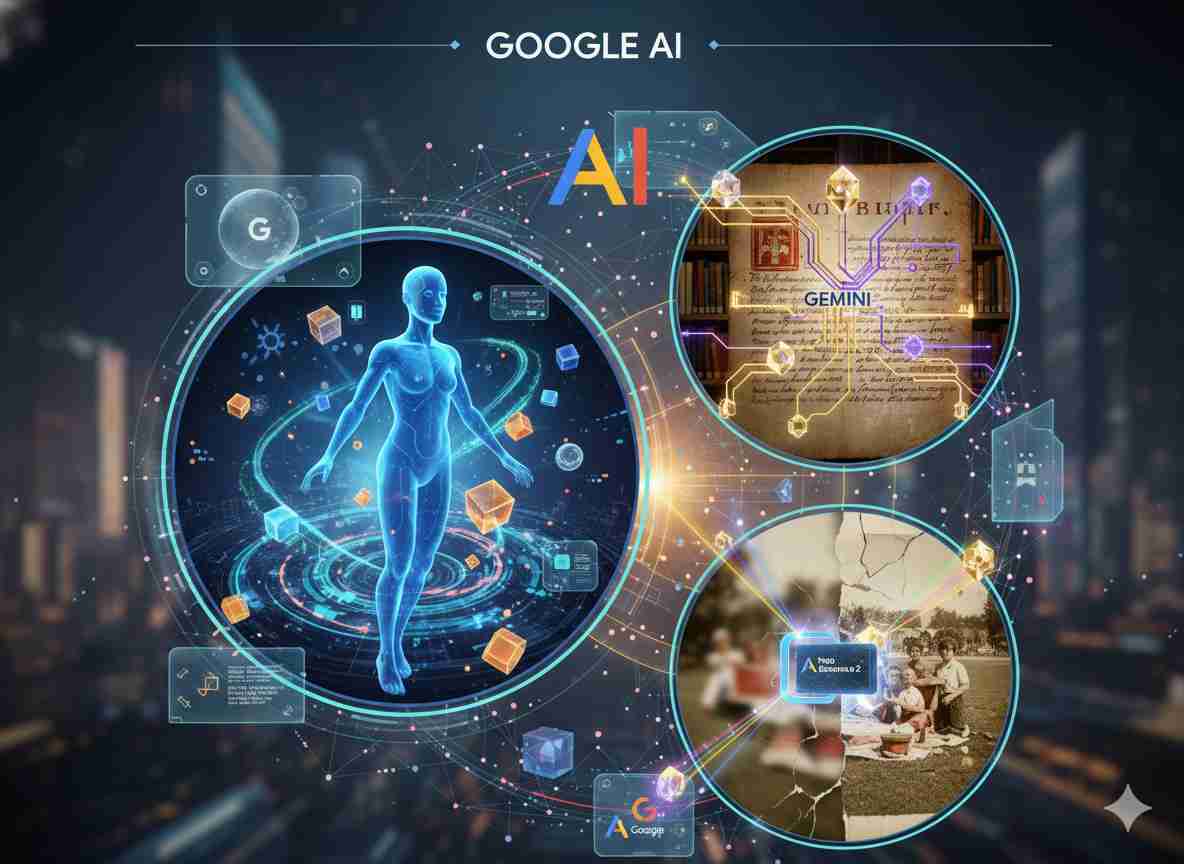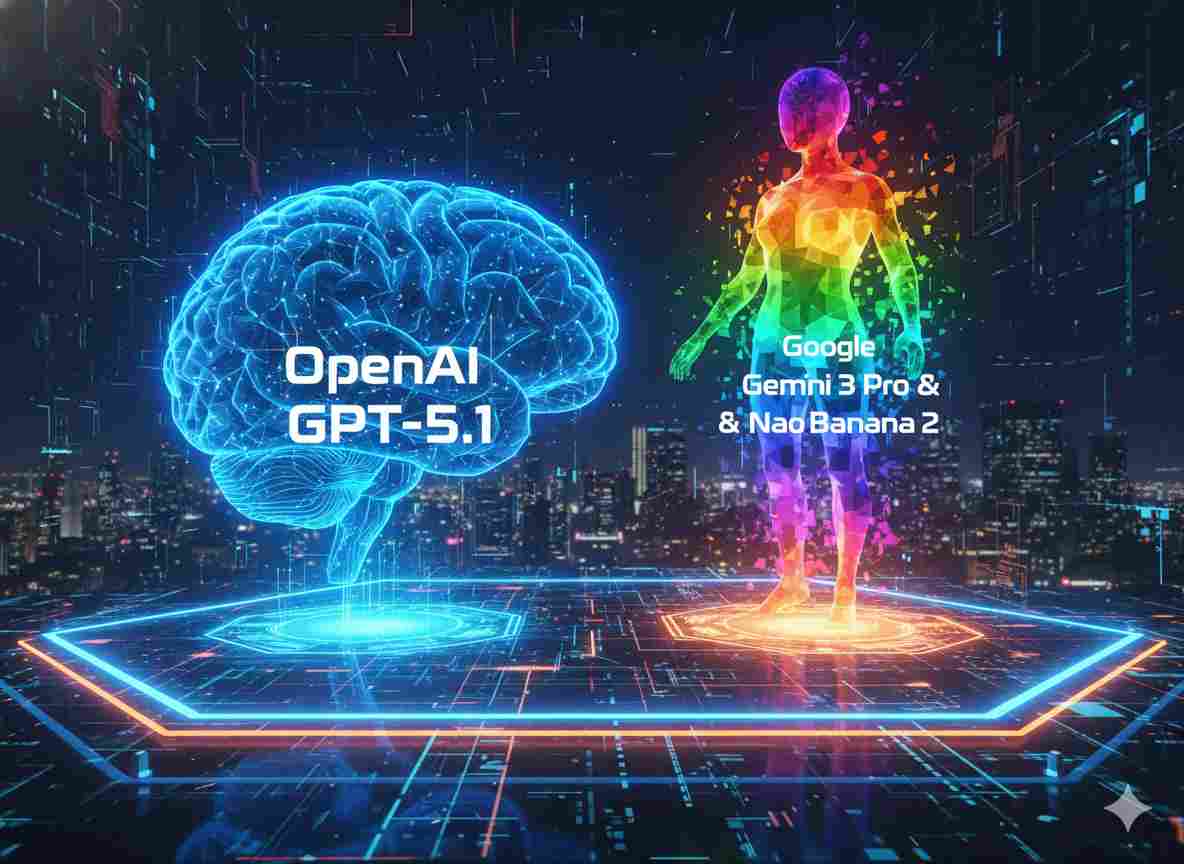ChatGPT’s Agentic Leap: New AI Updates from OpenAI, ByteDance, Adobe, and More

The world of AI is abuzz with huge developments. OpenAI has made ChatGPT’s developer mode available. Now, it can actually perform things. It means ChatGPT does more than just responding to questions. It can perform actual actions. ByteDance is also causing a stir. Its new image model is quicker and more affordable. It’s a direct challenge for Google. Deep Agent enables anyone to create apps with payments in minutes. Adobe has included enterprise-class AI agents. And Claude can now edit your Word, Excel, PowerPoint, and PDF documents. We have a great deal of cool AI news to report. Let’s dive in.
These new technologies reveal AI becoming further integrated. AI can now process information. It can also execute commands. It can alter data directly. This is a significant change. It means increased productivity. It also means increased innovation. We’ll examine each update. We’ll also observe how they impact industries.
OpenAI Unlocks ChatGPT’s Action Capabilities with Full MCP Tool Support
OpenAI’s new release is a big deal for ChatGPT. The developer mode now supports MCP tools in full. This shifts the way we interact with ChatGPT. Previously, you could only receive information. Now, you can do something about that information. You can interact with other systems directly.
Developer Mode Improvements and Beta Release
ChatGPT is now able to take action. This is all due to full support for MCP tools. It’s not just about pulling data anymore. You can now make changes. Consider changing a Jira ticket. You might also initiate a Zapier workflow. Or modify a customer record in your CRM. You might even connect multiple services. All without ever leaving chat. This feature is currently in beta. It’s for Plus and Pro users. You can use it on the web.
Setting Up and Connecting Tools
It’s very easy to get this set up. First, navigate to settings. Then, click on connectors. Choose advanced. You will find an option to enable developer mode. Then you can add your own MCP servers. This is accessed in the connectors tab. Your tools will be visible after being connected. They are displayed in ChatGPT’s composer. This is when you’re in developer mode. ChatGPT employs protocols such as SSE and streaming HTTP. These allow it to communicate with your servers. For security, it has OAuth support. You can enable tools to turn them on or off. You can also reload them. This keeps them current.
The Power of Write Actions and Prompt Engineering
This change is a game-changer. ChatGPT is now able to utilize tools for writing. It is not merely for reading or searching anymore. This makes the way you ask really important. If you have lots of tools that all do the same thing, you have to be explicit. Let ChatGPT know which one is the priority source. If two tools are similar, tell it which to use. You can even prioritize the actions. For instance, let it read a file first. Then write a new copy back. It can skip everything else. The names for your tools are extremely crucial. Make them concise and action-based. For instance, say “Use this when you want to update a customer record.” This makes it easier for ChatGPT to select the correct tool.
Safety and Approval Mechanisms
As ChatGPT can write data, safety is important. OpenAI has implemented robust safeguards. You have full visibility of the input and output before any write action occurs. This is displayed in JSON form. Write actions always require your approval. You can instruct it to memorize your choice. But it will prompt by default. OpenAI is religious about prompt injections. They also look out for model mistakes. Poor connectors might lead to issues. But with caution, ChatGPT is powerful. It’s not simply a dashboard any longer. It’s a command center. It can execute your workflows in real time.
ByteDance’s LightSpeed Image Model Challenges Google’s Gemini
ByteDance has a new image model. It’s named Seedream 4.0. It’s targeted directly at Google’s Gemini 2.5 Flash. Google’s model is also referred to as “Nano Banana.” ByteDance describes Seedream 4.0 as superior. It scores higher in prompt following, alignment, and visuals according to their own tests. They have not issued a full report. So, we must take this as a claim for the time being.
Seedream 4.0: New Kid on the Image Generation Block
Seedream 4.0 is a mixture of two. It possesses the text-to-image abilities of Cedrëam 3.0. It also possesses the editing capabilities of Seeddit 3.0. This is regarded as a significant breakthrough. It makes image editing and generation more potent.
Aggressive Pricing and Performance Benchmarks
The cost of Seedream 4.0 is highly competitive. It is priced similarly to Seedream 3.0. That’s $30 for 1,000 image generations. Global hosting on Fal.AI is around 3 cents an image. Gemini 2.5 Flash is slightly more expensive. It’s around 3.9 cents an image. ByteDance also indicates the new model is much quicker. Image generation is more than 10 times quicker. Early testers report the editing is correct. It does it rapidly. Seedream 4.0 translates text prompts well. It doesn’t mess up the image layout.
Availability and Competitive Landscape in China
You can utilize Seedream 4.0 if you are within ByteDance’s ecosystem. Consumers are able to utilize it with Jimag and Doubao. Businesses are able to utilize it via Volcano Engine. On public leaderboards, Gemini 2.5 Flash remains at the top. It dominates generation and editing. Seedream 4.0 hasn’t ranked there yet. To put things into perspective, Seedream 3.0 is roughly fifth for generation. It’s sixth for editing. The Chinese AI ecosystem is quite active. Tencent and Kuaishou are also in the game. China now legally recognizes copyright for AI-created art. This occurred in late 2023. Rules for labeling AI material exist as well.
Deep Agent Democratizes App Creation with Integrated Payments
Deep Agent is simplifying app development. It’s ideal for creators and small teams. It’s all about getting paid. Updating is easy. Deep Agent can build a real app from a single prompt. It has Stripe payments too. That is a big feature. Onboarding Stripe can be difficult. You require keys, codes, and testing. Deep Agent takes care of everything.
Instant App Generation and Stripe Integration
The agent requests what it requires. It requests product names and prices. It requests what is included. Then it constructs the entire app. This includes the checkout functionality. You integrate your Stripe account. It is accomplished in a few secure steps. Money directly goes into your account. No messy workarounds are required. The sites are professional-looking. They are not mere bare-bones prototypes. You have three ready-to-use sections. There is a product page. It contains images and Stripe checkout. There is a workshop page as well. Customers can book and pay there. And there is a consultation page. Payment is necessary to book an appointment. The entire process is seamless. Customers pay and receive an email confirmation.
Pre-built Funnels and Flexible App Types
It is easy to make updates as well. Want to update prices? Add a new product? Give a discount? Just instruct the agent. The payment system and site update at the same time. This isn’t necessarily to sell products. You can request a mini CRM. You might be able to get a Notion-like workspace. It can even have user permissions set up. A marketplace can be done too. Or a basic micro-blog. Payments are always included.
The abacus.ai team is developing a community. They have weekly contests for app builds. The reward is $2,500. The standard plan costs around $10 per month. Compare this to the past. That used to take months of work. It required many developers. It was expensive. Some reportedly managed to get an operational app live in around 30 minutes. This indicates the challenge is different. It’s not about creating the app. It’s about having something decent to sell.
Adobe’s Enterprise AI Agents Streamline Business Workflows
Adobe has opened up its AI agents to a broad use. They are now included in the Adobe Experience Cloud. It’s a sensible move. It’s about giving actual value. The system makes use of the Adobe Experience Platform Agent Orchestrator. It marries decision science and language models. This is used to decipher what you want. Then it employs the appropriate agents for the task. The agents can assist with a variety of things. They construct audiences. They govern customer journeys. AI Agents interpret experiments. They optimize sites. They give data insights. These AI Agents have product support.
These agents are integrated within other Adobe solutions. This includes Journey Optimizer and Customer Journey Analytics. They are also within Experience Manager and Real-Time CDP. This implies that they can utilize your current data. Adobe reports more than 70% of customers are already using the AI assistant. This is the chat interface for agents. Large brands such as Hershey and Lenovo are employing them. Adobe is also enhancing customization. Agent Composer and Agent SDK are on the way. This will allow teams to fine-tune agents. They can configure them to abide by brand guidelines. Adobe is also collaborating with partners. These include Google Cloud and PwC. They want to facilitate multi-agent work. This is for businesses with lots of rules and handoffs.
Dynamic Reasoning and Augmenting Teams
The agents have a intelligent reasoning engine. It learns as situations evolve. The system doesn’t merely match skills with tasks. It realigns as the customer experience continues. It aims to assist teams. Agents seeks to enhance outcomes. It assists in making things more personalized at scale. You won’t need to replace your existing systems. If you already use Adobe products, these agents blend seamlessly. They function where your campaigns and data already reside.
Claude’s Practical File Editing Enhances Productivity
Anthropic has just released a very handy update. Claude is now able to generate and edit office files. You can do it with just words. You can also upload big files. Provide Claude some data or a simple command. It can generate an Excel sheet. It can create a PowerPoint presentation. Claude can draft a Word document. It can even create a PDF. It works with large files also. You can upload or download files of up to roughly 30 megabytes. Claude can convert CSV or TSV files to reports. It can produce charts. The greatest feature is editing. It can modify in whole files. It knows the context.
Context-Aware Bulk Editing and Efficiency Gains
You can instruct Claude to substitute text. For instance, replace all “ABC” with “XYSD.” You can replace currency also. Tell it to translate USD to EU prices. It can use current rates or a fixed rate. You can rename a job title from “manager” to “executive.” Claude does the changes. It leaves the original layout intact. This saves a lot of time. You have consistent formatting. No manual cleanup is necessary. Google’s Gemini can also generate documents. But Claude’s editing is quicker. It gives more control.
Competitive Edge and Future Implications
There is a rumor that Microsoft will include Claude in Office 365. If they do, Claude will be integrated into Word, Excel, and PowerPoint. That would make Claude a native tool. It would be something you do every day. For anyone doing reports or finances, this is wonderful. You can leave boring tasks behind. Find and replace is simplified. Currency conversions are easy. Normalizing titles is a snap. You won’t ruin your templates.
Conclusion
The AI universe is racing ahead. It’s becoming more helpful. It’s also integrating into our current tools. OpenAI’s ChatGPT is now acting. This is turning work around. ByteDance’s new image model is quick and affordable. It’s a tough competitor. Deep Agent makes it simple to build apps. It has payments, too. Adobe’s AI agents will enhance business processes. Claude’s file editing abilities will save everyone time. These upgrades make AI more than just an assistant. It’s becoming a partner. It assists us in creating, maintaining, and getting things done.




